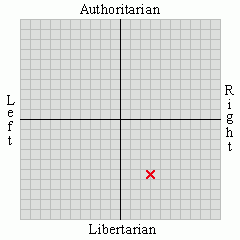A little bit of research reveals some interesting numbers. I've compared the number of miles driven on U.S. highways to the national average price of regular unleaded gas going back to 1990 (using data from the links above). It's useful to see the numbers side by side, I think. I've also adjusted the price of gas for inflation (using 2007 dollars), although that's a dicey proposition -- the price of gas is itself an inflationary pressure on the economy. But there was other inflationary pressure going on all this time, and as you can see, when you adjust for inflation, the real price of gas fell during the 1990's and didn't really start its huge climb until 2003. Finally, I include a number I've computed called "elasticity" which is the product of demand (as measured in total road usage) divided by the inflation-adjusted cost of gasoline. I've assumed no inflation between 2007 and the present point of 2008, although that's obviously not going to be quite accurate. Here's the data:
| Year | Millions of Miles Driven | Average Price (Raw Dollars) | Average Price (2007 Dollars) | Elasticity |
| 1990 | 2,130,634 | $1.30 | $2.15 | 9.93 |
| 1991 | 2,145,074 | $1.10 | $1.72 | 12.46 |
| 1992 | 2,204,858 | $1.10 | $1.63 | 13.49 |
| 1993 | 2,269,835 | $1.07 | $1.56 | 14.56 |
| 1994 | 2,313,543 | $1.07 | $1.52 | 15.22 |
| 1995 | 2,400,555 | $1.10 | $1.53 | 15.74 |
| 1996 | 2,433,987 | $1.19 | $1.61 | 15.14 |
| 1997 | 2,517,474 | $1.19 | $1.56 | 16.18 |
| 1998 | 2,581,051 | $1.02 | $1.31 | 19.72 |
| 1999 | 2,638,895 | $1.12 | $1.41 | 18.66 |
| 2000 | 2,727,792 | $1.46 | $1.80 | 15.12 |
| 2001 | 2,762,559 | $1.38 | $1.65 | 16.73 |
| 2002 | 2,823,102 | $1.31 | $1.54 | 18.31 |
| 2003 | 2,858,592 | $1.52 | $1.74 | 16.44 |
| 2004 | 2,933,314 | $1.81 | $2.04 | 14.39 |
| 2005 | 2,979,745 | $2.24 | $2.44 | 12.21 |
| 2006 | 2,999,863 | $2.53 | $2.67 | 11.24 |
| 2007 | 3,003,767 | $2.77 | $2.77 | 10.86 |
| 2008 | 2,966,431 | $3.49 | $3.49 | 8.50 |
Now, that tells you something. At least, it tells me something. What I think, looking at this data, is that the real breaking point of price to demand is somewhere around $2.75 a gallon (in adjusted 2007 dollars). I say this because demand for driving time remained pretty close to constant from the previous year in 2007. Before that, the demand for gasoline (as measured in number of miles driven) increased each year no matter what happened to the real price of gas.
So I'm going to have to modify some of my previous opinions. It looks like the demand curve for gasoline is a little bit more gentle than I'd thought; it's just that measuring the impact of rising gas prices on demand for gas turns out to be a bit more complex than I'd initially thought. But in 2007 we passed the point that the curves became steep enough to change the direction of the market, and demand has begun to decrease. This suggests to me that equilibrium will be reached sooner rather than later -- either that, or we are hitting the point at which the pain at the pump has been felt far enough up on the economic food chain that the "kink" in the curve has been reached.
The good news? If I'm right, prices will not rise that much more from where they are now. We will not see $5.00 a gallon gas soon, at least not until inflation indexes the raw price up to that level. The bad news? This is equilibrium. Right now, baby. The price isn't going to fall very much from its current national average of about $3.90 a gallon. Pretty much ever.







2 comments:
"The price isn't going to fall very much from its current national average of about $3.90 a gallon. Pretty much ever."
Please be wrong
If current market conditions are the result of some sort of artificial inflation in the price of oil, then I would be wrong. But it seems to me that the oil industry, both globally and locally, is pretty competitive. What you see is more likely to be the market price than not.
Post a Comment